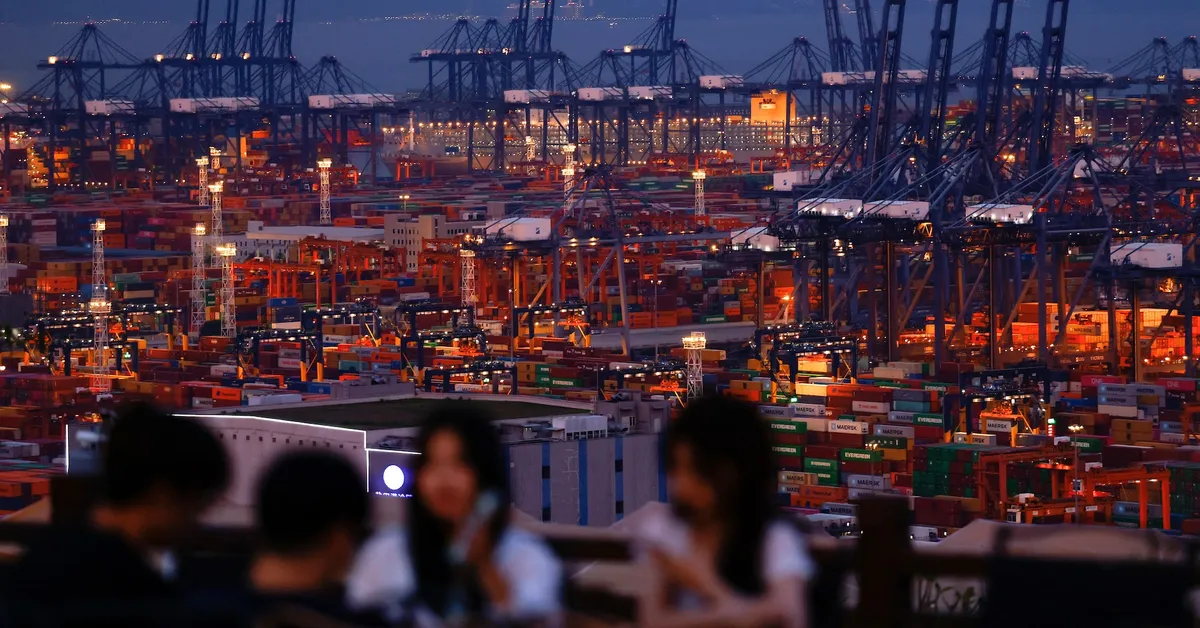
On May 10, 2023, China and the United States initiated their first significant meeting regarding what analysts are dubbing Trade War Two. The objective of this meeting is to find a way to retreat from a situation that is increasingly seen as detrimental to both economies. However, there remains a lack of clarity regarding what a successful resolution would entail for either party.
At the center of this ongoing economic conflict is China, which has become a focal point in U.S. President Donald Trump's global trade war. This trade war has significantly disrupted financial markets, altered supply chains, and raised concerns about a potential global economic downturn. Washington aims to tackle its trade deficit with Beijing and urges China to abandon what the U.S. labels as a mercantilist economic model. The U.S. seeks to have China contribute more to global consumption, which would necessitate significant domestic reforms within China.
Conversely, Beijing is resistant to any external pressures that might interfere with its developmental trajectory. It views advancements in industrial and technological sectors as essential to avoid the "middle-income trap." China demands the removal of tariffs, clarity on which products the U.S. would like it to purchase, and equal treatment on the global stage.
The gap between the two nations appears wider than it did during their initial trade war in Trump's previous term. As U.S. Treasury Secretary Scott Bessent and chief trade negotiator Jamieson Greer meet with China's economic leader He Lifeng in Switzerland, analysts express skepticism about achieving any tangible outcomes. Significant non-tariff issues, such as fentanyl, technology restrictions, and geopolitical concerns—particularly the ongoing conflict in Ukraine—are likely to complicate these discussions.
One notable aspect of the talks is China's decision to send a senior public-security official, highlighting how deeply intertwined non-trade issues are with the current negotiations. According to Scott Kennedy, an expert at the Center for Strategic and International Studies, the weekend negotiations will likely not yield substantial resolutions but will instead focus on establishing a process and an agenda.
Financial markets are cautiously optimistic about the possibility of an agreement that might lower tariffs from the current excessive rates, which are perceived as a virtual trade embargo. Trump has hinted that the punitive U.S. tariffs, currently set at 145% on Chinese goods, could be reduced. He recently suggested that a decrease to 80% may be appropriate, although this figure still exceeds his campaign promises from the previous year.
If China insists on receiving the same 90-day waiver on tariffs that other nations have had, it may complicate negotiations. Ryan Hass from the Brookings Institution predicts that breakthroughs are unlikely, but even a small reduction in tariffs or an agreement for follow-up discussions could be perceived positively by investors.
While either side might portray any tariff rollbacks as a victory for their domestic audiences, the reality is that Chinese factories and workers are likely to experience the negative impacts of tariffs in the coming months. American consumers may also face higher prices and potential job losses. The fundamental issues underlying the conflict—specifically the current global trade dynamics, which heavily favor China's affordable production and America's consumer demand—will not be resolved in the immediate future.
However, there is some relief in the markets as the world's two largest economies explore pathways to de-escalation, potentially avoiding further financial turmoil. Lynn Song, ING's chief Greater China economist, anticipates any reduction in tariffs could bring them down to around 60%, aligning with Trump's pre-election commitments. This level, while still high, might allow importers to procure necessary products with less distress.
Leading up to the Saturday meeting, back-channel discussions between China and the U.S. were hampered by disputes over issues like fentanyl, the hierarchy of negotiating officials, and the tone of U.S. rhetoric. Reports indicated that conflicting statements from both nations further hardened Beijing's public stance, with state media warning of a protracted struggle ahead.
Nevertheless, China has signaled that engaging in talks presents no harm at this juncture. Observers note that this situation allows Beijing to gauge the U.S.'s true intentions while maintaining an image of strength domestically. As one Beijing-based diplomat remarked, the focus is no longer on who will concede first but rather on how each side will portray the other as having backed down.